Planets, Moons & Meteors
Most pics courtesy of NASA
Earth's Richat Structure
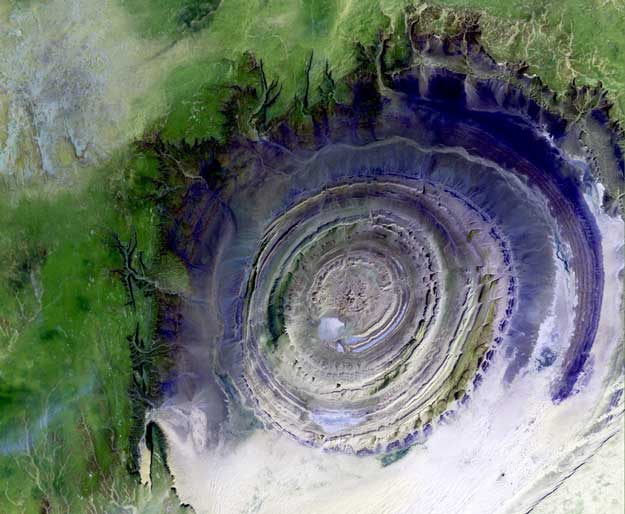

Explanation: What on Earth is that? The Richat Structure in the Sahara Desert of Mauritania is easily visible from space because it is nearly 50 kilometers across. Once thought to be an impact crater, the Richat Structure's flat middle and lack of shock-altered rock indicates otherwise. The possibility that the Richat Structure was formed by a volcanic eruption also seems improbable because of the lack of a dome of igneous or volcanic rock. Rather, the layered sedimentary rock of the Richat structure is now thought by many to have been caused by uplifted rock sculpted by erosion. The above image was captured last year by the orbiting Landsat 7 satellite. Why the Richat Structure is nearly circular remains a mystery.
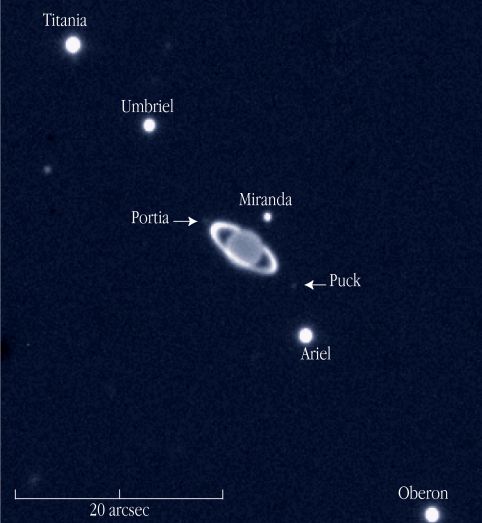
Explanation: Yes it does look like Saturn, but Saturn is only one of four giant ringed planets in our Solar System. And while Saturn has the brightest rings, this system of rings and moons actually belongs to planet Uranus, imaged here in near-infrared light by the Antu telescope at the ESO Parnal Observatory in Chile. Since gas giant Uranus' methane-laced atmosphere absorbs sunlight at near-infrared wavelengths, the planet appears substantially darkened, improving the contrast between the otherwise relatively bright planet and the normally faint rings. In fact, the narrow Uranian rings are all but impossible to see in visible light with earthbound telescopes and were discovered only in 1977 as careful astronomers noticed the then unknown rings blocking light from background stars. The rings are thought to be younger than 100 million years and may be formed of debris from the collision of a small moon with a passing comet or asteroid-like object. With moons named for characters in Shakespeare's plays, the distant ringed world Uranus was last visited in 1986 by the Voyager 2 spacecraft.
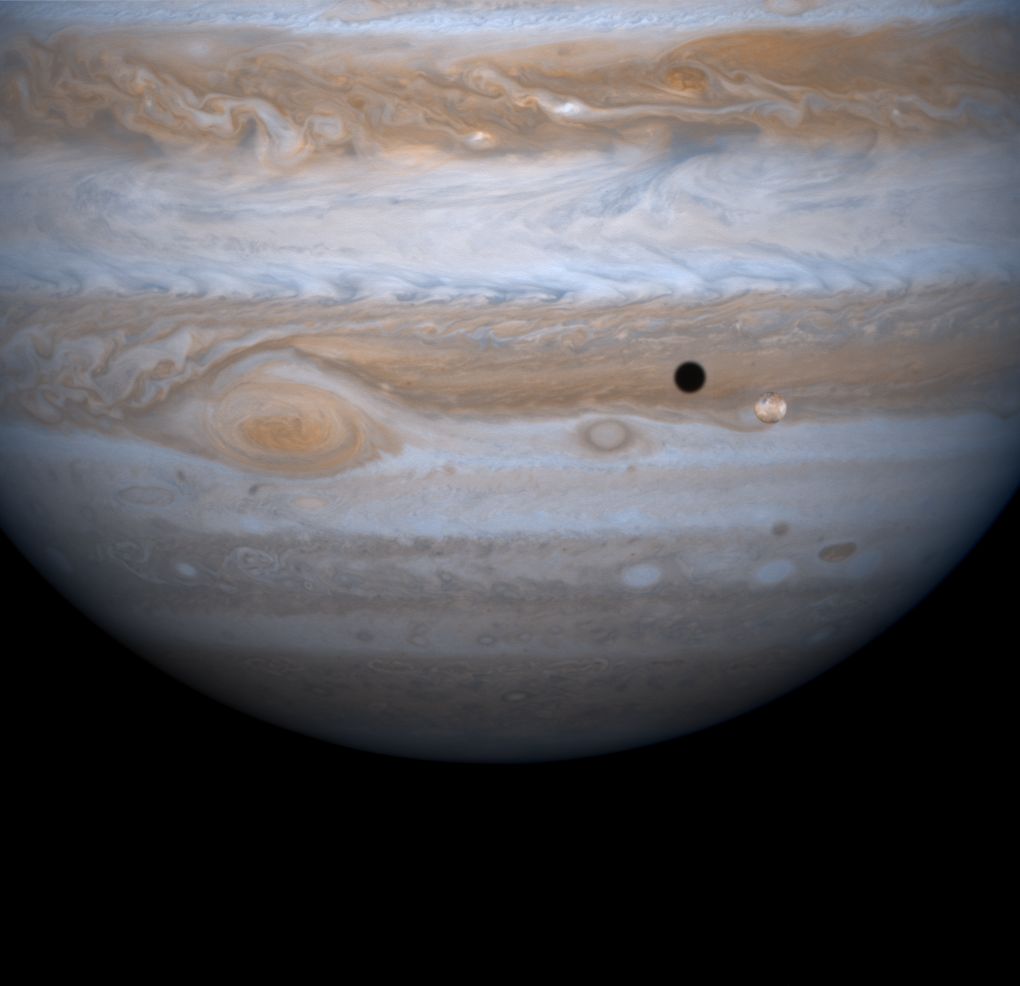
Explanation: Pictured above is the innermost of Jupiter's Galilean satellites, Io, superposed in front of the gas giant planet. To the left of Io is a dark spot that is Io's own shadow. A solar eclipse would be seen from within the shadow spot on Jupiter. Viewed from planet Earth, similar shadows of Jupiter's large moons can often be seen crossing the giant planet's disk. But during the next several months, the Galilean moons can also be seen crossing in front of each other as, for a while, their orbits lie nearly edge-on when viewed by earthbound observers. This true-color contrast-enhanced image was taken two years ago by the robot spacecraft Cassini, as it passed Jupiter on its way to Saturn in 2004.
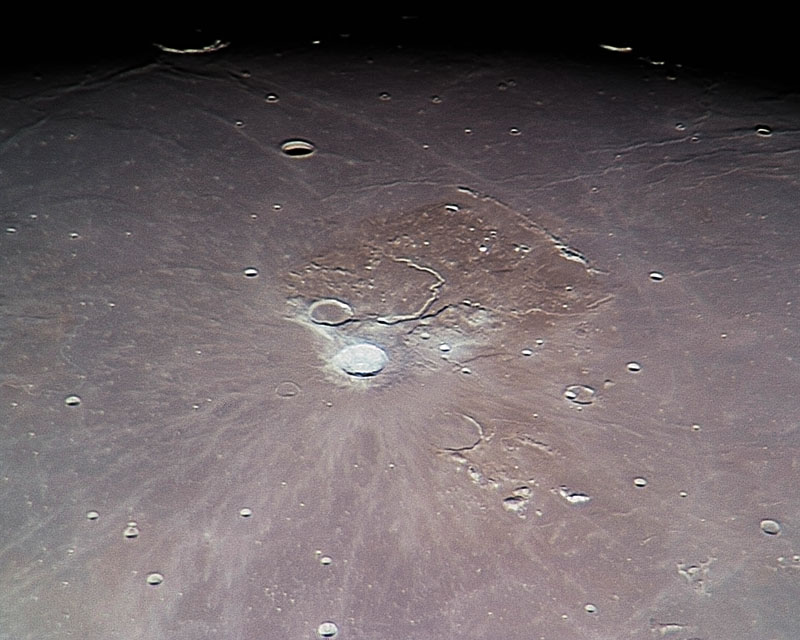
Explanation: Anchored in the vast lava flows of the Moon's Oceanus Procellarum lies the Aristarchus Plateau. Recorded from a backyard observatory on planet Earth, this sharp, amazingly colorful view nicely captures the geologically diverse area, including the brownish plateau, Aristarchus and Herodotus craters, and the meandering Vallis Schroteri. The bright impact crater at the corner of the plateau is Aristarchus, a young crater 42 kilometers wide and 3 kilometers deep, surrounded by a radial system of light-colored rays. Only slightly smaller, lava flooded Herodotus crater is above and to the left. A valley or rille feature likely carved by rapidly flowing lava or a collapsed lava tunnel, Vallis Schroteri begins just to the right of Herodotus and winds across the plateau for about 160 kilometers, eventually turning toward the top of the picture and the shadow of the lunar terminator. Aristarchus Plateau itself is like a rectangular island about 200 kilometers across, raised up to 2 kilometers or so above the smooth surface of the lunar Ocean of Storms.
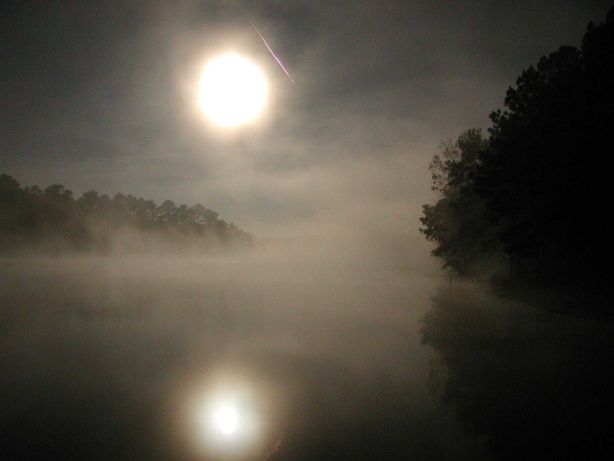
Explanation: Photographer Blake Suddeth took over a hundred digital pictures early Tuesday morning in order to capture this single, gorgeous 10 second exposure of a "Leonid of the Lake" meteor flashing by a very full of itself moon. The dreamlike foreground lake and fog are courtesy of Greenwood, South Carolina, USA.
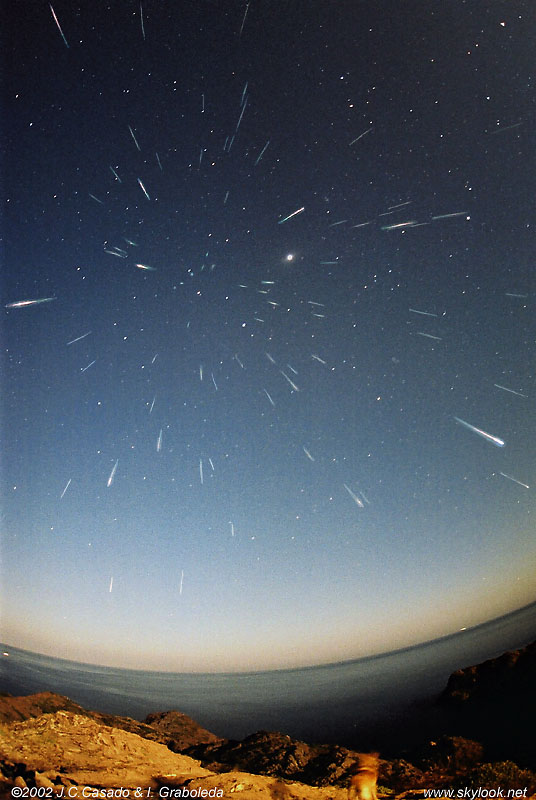
Explanation: This lovely view from northern Spain, at Cape Creus on the easternmost point of the Iberian peninsula, looks out across the Mediteranean and up into the stream of the 2002 Leonid meteor shower. The picture is a composite of thirty separate one minute exposures taken through a fisheye lens near the Leonids' first peak, about 4:00 Universal Time on November 19. Over 70 leonid meteors are visible here, some seen nearly head on, with bright Jupiter positioned just to the right of the shower's radiant in Leo. Perched on the moonlit rocks at the bottom right, the photographers' dog seems to be watching the on-going celestial display and adds an interesting visual element to the scene. What's the dog's name? Leica, of course.
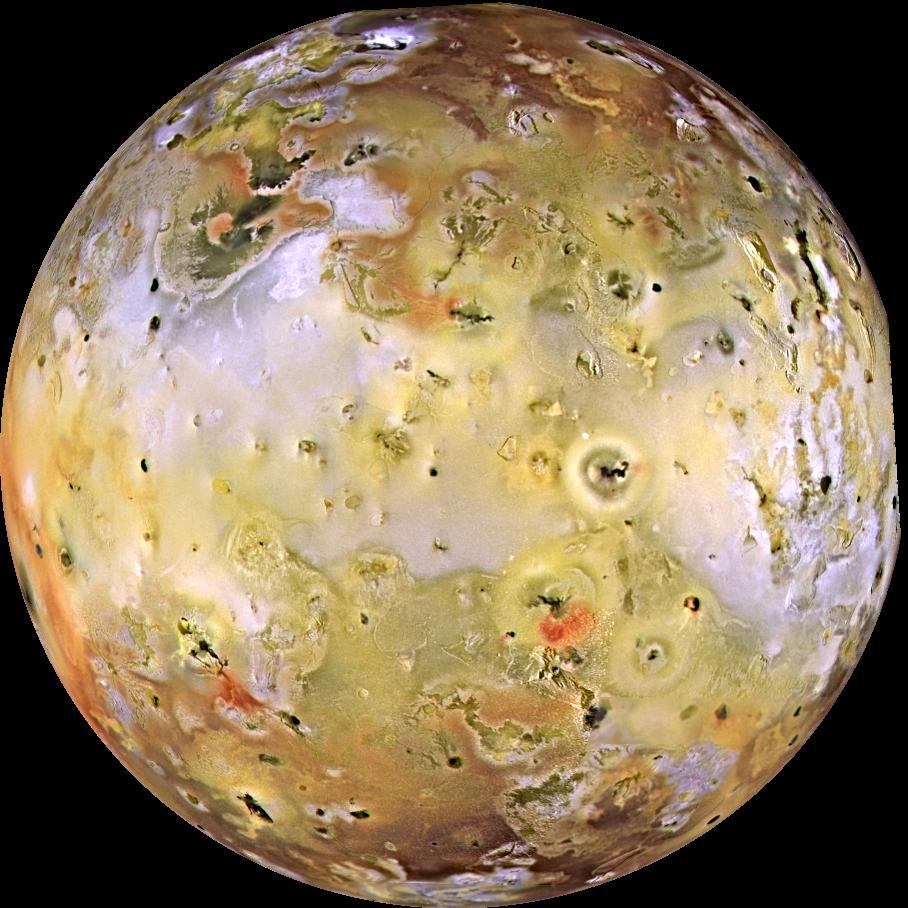
Explanation: Like the downtown area of your favorite city, the roads you drive to work on, and any self-respecting web site ... Io's surface is constantly under construction. This moon of Jupiter holds the distinction of being the Solar System's most volcanically active body -- its bizarre looking surface continuously formed and reformed by lava flows. Generated using 1996 data from NASA's Galileo spacecraft, this high resolution composite image of Io is centered on the side of Io that always faces away from Jupiter. It has been enhanced to emphasize Io's surface brightness and color variations, revealing features as small as 1.5 miles across. The notable absence of impact craters suggests that the entire surface is covered with new volcanic deposits much more rapidly than craters are created. What drives this volcanic powerhouse? A likely energy source is the changing gravitational tides caused by Jupiter and the other Galilean moons as Io orbits the massive gas giant planet. Heating Io's interior, the pumping tides would generate the sulfurous volcanic activity.
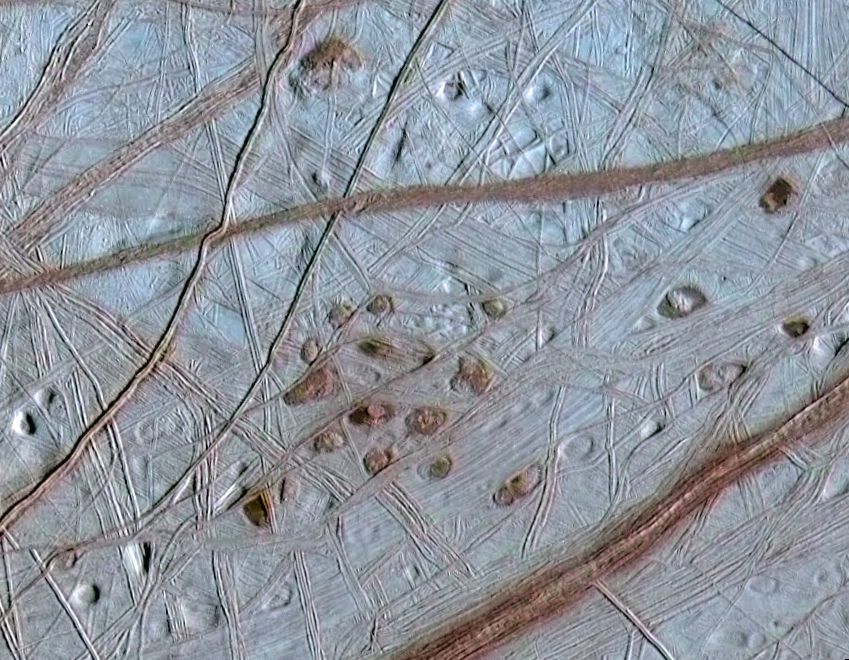
Explanation: Europa, one of Jupiter's large Galilean moons, may well possess an ocean of liquid water hidden beneath its icy surface -- and so holds the tantalizing possibility of life. In this image, constructed with data recorded in 1996 and 1997 by the Galileo spacecraft, Europa's characteristic surface ridges and cracks are seen along with domes and dark reddish spots called lenticulae, from the Latin word for freckles. The freckles are about 10 kilometers across and are believed to be blobs of warmer ice from below that have gradually risen through the colder surface layers, analogous to the motions in a lava lamp. If the freckles do represent material from deeper ice layers closer to the hidden ocean, future space missions to investigate Europa's interior could sample the relatively accessible freckles rather than drill through Europa's potentially thick ice shell.
|